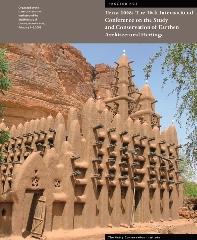Earthen architecture constitutes one of the most diverse forms of cultural heritage and one of the most challenging to preserve. It dates from all periods and is found on all continents but is particularly prevalent in Africa, where it has been a building tradition for centuries. Sites range from ancestral cities in Mali to the palaces of Abomey in Benin; from monuments and mosques in Iran and Buddhist temples on the Silk Road to Spanish missions in California.
This volume's sixty-four papers address such themes as earthen architecture in Mali, the conservation of living sites, local knowledge systems and intangible aspects, seismic and other natural forces, the conservation and management of archaeological sites, research advances, and training. The contributors represent a wide range of international institutions. The book will be of interest to conservators and site managers as well as those studying earthen architectural heritage worldwide.

(0 Comentarios)